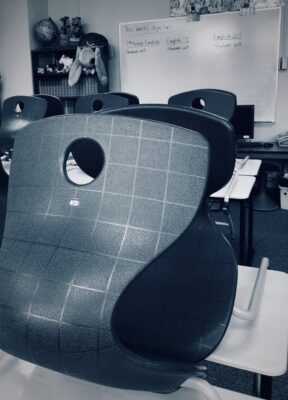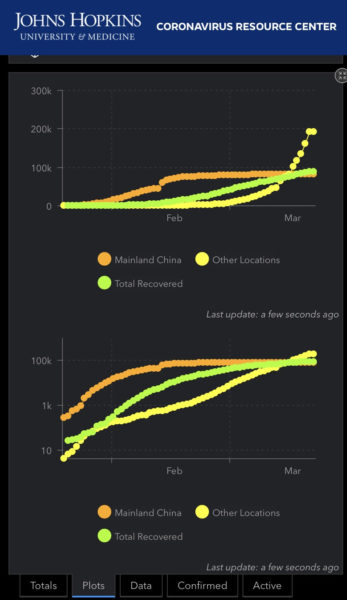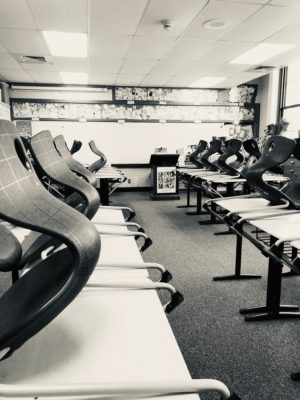Last weekend I attended the 4th Annual Washington Teacher Advisory Council’s Spring Conference. The planners re-organized their conference into an online format. Amazingly, they were able to accommodate the largest number of attendees in their history thus far. That is one positive when it comes to the distance learning format. We can fit more folks into the “room.”
Don’t get me wrong; I would have much preferred seeing all my friends and colleagues from around the state in person. I look forward to it every year. However, seeing them all virtually and hearing how they are dealing with our unprecedented issues these last months of the school year was invaluable.
If you are unfamiliar with WATAC, it is an organization formed initially to organize award-winning teachers in our state to make our expertise available to stakeholders with influence on education policy. Since its inception, it has expanded to include leaders from all aspects of education – administration, certificated, and classified. Anyone with an interest in teacher leadership is welcome at the conference. And, for me, the conference has been a great way to get a shot of teacher energy as the final stretch of the school year hits, and I really, really need that boost.
This year…I really needed a boost.

Don’t we all? The truth is I am actually grieving. I wobble back and forth between shock, depression, and a sort of manic activity level of problem solving. I’m a mess! In fact, the concept of the five stages of grief won’t get out of my head. Although, losing a loved one is unspeakably worse, losing my classroom feels like a huge loss. After all, I love my job. I love the most annoying of my seventh graders and the snarkiest of my seniors. I am deeply attached to my classroom, my kids, and my teacher lifestyle. So, yes, I am grieving the loss.
The five stages are trademarked, actually. You can go to David Kessler’s website, if you are interested in what he says about grief and grieving. After wondering if I was actually experiencing grief, I looked over the process: denial, anger, bargaining, depression, and acceptance.
Yep. I’m doing all of that.
The conference theme was “Back to the Future, and keynote speaker Amy Campbell, our current Washington State Teacher of the Year, quoted the famous meme that comes from the movie Back to the Future, the one where Marty McFly says, “This is heavy.”
This IS heavy, Marty. You thought it was tough that your mom had a crush on you. But this, THIS is heavy.
Education is changing. This is not merely a moment of pause. We can’t go back to normal. In this crisis we have pulled back a curtain and revealed serious problems with equity in education. Yes, we knew they were there, but it is easy to just go about our business making little shifts that don’t rock the boat too much.
It won’t work that way this time. Serious change is needed, and now is exactly the time to work on it.
As Amy told us- speaking directly to my teacher soul – we are experiencing loss. We are in a crisis that impacts our safety, our economy, and our mental health. “Hindsight really is 2020,” and we need to find our “place on the continuum and start moving forward.”
Most importantly, she said, “Old normal should not be the final destination.” And I feel that. I really do.
As a member of the teacher panel later in the conference, I was asked what was working, what was hard, and what I want to take into the future of education. I don’t remember what I said exactly, and I hope it made some sense at the time. But, I can summarize right now.
What’s working? YouTube, Padlet, Zoom, and all the technology no one thought we could use on such a large scale.
What’s hard? Missing the kids and noticing that some fell off the radar when the crisis hit. Many of my kids live in crisis all the time. Not knowing where they are right now is indescribably tough..
What to take forward? Poor kids, rural kids, isolated kids—they deserve whatever the other kids get. I don’t want to see how the one-to-one schools gracefully flipped their systems to accommodate distance learning. I want to see how internet access becomes a universal right for all families. I want legitimate supports for English language learners and students with IEPs and 504 plans. I want to see every teacher receiving the training to support distance learning. I want my tiny district to have more than the grit, goodwill, and volunteer spirit that is filling the gaps in the system. I want equity for all- educators, families, students, all of us.
That’s what I would take to the future.
So, thank you Amy and all the other wonderful WATAC planners and facilitators. You acknowledged what we are going through and you set us on an impassioned path to the future. You did not pretend it was easy, but you did assure us that we are not alone on this journey. There are a lot of amazing educators who are fighting the fight alongside us. So thank you.
In closing, my grief research led me to David Kessler’s final stage of grief from his latest book. He calls it “finding meaning.” It is the way that we can begin to move forward. We find meaning in the loss. I am starting to feel like I am on that path. With the “loss” of my familiar job as an educator, I am focusing on how to reinvent it to make it equitable, relevant, engaging, and, well, comforting, for the students of my future classroom, online or elsewhere. I am beginning to plan going back to the future.
Amy’s Keynote on OSPI’s YouTube Channel





